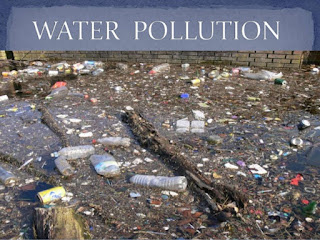Air Pollution, Environmental Pollutants And Your Child's Health
Children and Air Pollution |: Children breathe more air per pound of body weight, so their exposure to air pollution is much greater than adults. Children’s organs, including their lungs, develop until they reach their late teens, usually around the age of 18. Studies show that developing organs are sensitive to the toxic effects of air pollutants and environmental toxins, and that children absorb pollutants more readily than adults and retain them in the body for longer periods of time.* According to the World Resources Institute, “Because they breathe at a higher rate than adults, children are exposed to greater levels of pollution relative to their smaller body weight and are generally more sensitive to their effects on a pound-for-pound basis.”
In 2005, the World Health Organization published a review of studies conducted around the world in recent decades, to better understand the effects of air pollution on the health of children. The following are some of the important findings of this review:
1. The intrauterine, perinatal and early childhood periods are vulnerable times when the lungs are especially susceptible to injury by air pollutants. Exposure during these periods reduces the maximal functional capacity achieved in adult life and can lead to enhanced susceptibility during adulthood to infection due to the effects of pollutants such as tobacco.
2. Children with underlying chronic lung diseases, particularly asthma and cystic fibrosis, are especially vulnerable and are at greater risk of adverse effects from pollution than healthy children.
3. There is now substantial evidence on the adverse effects of air pollution on different pregnancy outcomes and infant health. The evidence shows that air pollution, (with concentrations typical of many European cities), increases the risk of death from respiratory causes in the post-neonatal period.
4. The evidence also shows a relationship between exposure to ambient air pollutants and adverse effects on the development of lung function. Reversible lung function deficits, chronically reduced lung growth rates and lower lung function levels are associated with exposure to air pollution. This evidence shows clearer relationships for particulate matter and traffic-related air pollution (indicated by nitrogen dioxide) than for other pollutants.
5. Based on current knowledge, air pollutants seem to interact with other environmental factors, such as allergens, viruses and diet, that influence the overall impact of air pollutants on children’s health.
The report concludes that there is a causal relationship between exposure to air pollutants and aggravation of asthma. The evidence is also sufficient to assume a causal link between exposure to particulate matter and increased prevalence and incidence of cough and bronchitis.
Environmental contaminants such as certain heavy metals and persistent organic pollutants show significant adverse effects on the development of the nervous system and behavior in children. Also, there is sufficient evidence of a causal relationship between exposure to lead and neurobehavioral deficits in children, in terms of cognitive impairment."
'via Blog this'






Comments
Post a Comment